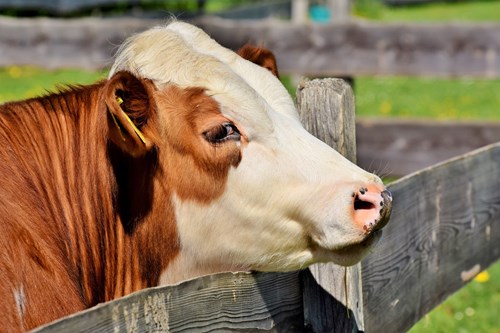Look out for Lungworm

Look out for coughing cattle at grass or in recently housed animals.
We have seen confirmed cases of lungworm last month across all of Scotland, including Aberdeenshire. This may be as a result of the hot dry weather earlier this year followed by warm and wet weather. The infective larvae are relatively susceptible to desiccation, so the hot spell may have decreased the burden at that time. Wet weather promotes the release of larvae form the faecal pat and also provides a good environment for the fungus Pilobus. This fungal species has an important role in the distribution of the infective larvae increasing the distance larvae can travel from the faecal pat. It is also worth noting that the infection can persist from year to year through carrier animals or the survival of L3 larvae over winter which will increase the larval burden at next seasons grazing.
A recent publication (Charlier at al. 2020*) estimated the total cost of Dictyocaulus viviparus to the UK (excluding treatment) as approximately £14.4 million. Individual cases are estimated to cost between £50 and £100 per animal affected, in dairy animals milk drop contributes to this economic loss, but it is important to remember that this parasite can cause mortality.
Clinical signs to be aware of:
- Widespread coughing in grazing cattle
- Loss of condition
- Increase in respiratory rate (tachypnoea)
- Difficulty breathing (dyspnoea)
Diagnosis in adult animals can be challenging as the infection is often not patent due to the animal’s immune response which is two-fold:
Phase 1: A rapidly initiated response in the mesenteric lymph nodes that destroys the majority of ingested larvae before they reach the respiratory tract. This protection declines relatively quickly over 6 months, if there is no further exposure.
Phase 2: A secondary immune response is initiated when larvae reach the respiratory tract, and this destroys and eliminates the parasites from the lung. This immunity is “remembered” for up to 2 years even in the absence of further exposure.
If cattle, whose immunity to larval entry (phase 1) has waned, are exposed to high numbers of larvae the phase 2 immunity will result in a rapid die off of the young worms when they reach the lungs. This can cause a hypersensitivity reaction with acute illness and even mortality with no associated respiratory signs.
Tests available through SRUC Veterinary Services for lungworm include post mortem examinations, Baermann technique for detection of lungworm larvae in faeces, a serum antibody test, and haematology to demonstrate eosinophilia.
*Charlier et al. Initial assessment of the economic burden of major parasitic helminth infections to the ruminant livestock industry in Europe. Prev. Vet. Med. 182(2020) 105103.
Posted by SRUC Veterinary Services on 02/11/2023
